Top 7 Pickleball Paddles with Largest Sweet Spot in 2025
Understanding the influencing factors of sweet spot size equips you to make informed decisions. Now, let’s explore some of the most sought-after paddles in the industry known for their expansive sweet spots, each designed to cater to distinct playing preferences.
Best Overall: Paddletek Tempest Wave Pro
The Paddletek Tempest Wave Pro is a timeless paddle revered for its expansive sweet spot, maintaining a strong player following due to its amalgamation of power and precision.
- Specifications: The Tempest Wave Pro weighs approximately 7.7 ounces, ideal for balanced maneuverability and power.
- Core and face technology: It boasts an innovative polymer honeycomb core that dampens vibrations and a highly responsive graphite face, presenting ultimate energy transfer during play.
- Suitability: Whether practicing elders or experienced competitors, its ability to accommodate multiple play styles makes it a plausible choice for various skill levels.
Players praise it for achieving a consistent, reliable swing, celebrating its ability to limit mishits and improve gameplay satisfaction tenfold.
Best Elongated: Gearbox CX14E
The Gearbox CX14E merges precision and elegance, marking it as a highly rated paddle among those prioritizing nuanced control in their game.
- Design highlights: An elongated frame complements a finely crafted raw carbon fiber face, illustrating exceptional responsiveness and control.
- Core innovation: The paddle integrates a polypropylene honeycomb core with remarkable power distribution, contributing to a compelling, robust sweet spot.
Its unique construction makes it perfect for players who thrive on leveraging extended reach while enjoying a well-finessed game.
Best Value: Selkirk Vanguard
The Selkirk Vanguard stands out for its large sweet spot and superior versatility, integrating top-tier technology to enhance player performance.
- Technological advancements: Its hallmark lies in the 360° Proto Molding technology that preserves the paddle's durability and QuadFlex 4-layer hybrid face for power and spin advancements.
- Weight category: Averaging between 7.7 to 8.4 ounces, its balance caters to a range of players, supporting both amateur and professional efforts alike.
Players often liken the Selkirk Vanguard paddle to a dependable companion, attributing a refined touch and articulated power as keys to its adoration.
Best Performance: Engage Encore EX 6.0
The Engage Encore EX 6.0 epitomizes engineering for competitive performances with exemplary sweet spot creation.
- Core and surface technology: By delving into proprietary Polymer Fusion technology, Engage crafts an expansive sweet spot that harmonizes power and touch.
- Dimensional advantage: An elongated shape helps alternative angles and offers preferable contact range while maximizing spin prowess through intricate surface detailing.
This paddle commands attention with its promise of enhanced consistency, enabling players to elevate enjoyment in every engagement.
Best Budget-Friendly: Gamma NeuCore Hellbender
The Gamma NeuCore Hellbender, known for its innovative approach towards paddle creation, carves out new territory in game finesse and sensitivity.
- Core intricacy: The NeuCore technology translates into outstanding feel and impact absorption, creating a tangible sweet spot that's hard to overlook.
- Handling capabilities: A subtle textured face escalates a player's spin potential, allowing creative shot-making dynamics.
Its ability to resonate with both comfort seekers and control optimizers positions this paddle as an invaluable asset to your pickleball arsenal.
Best for Power: CRBN 3X Power Series 16mm
Designed for enthusiasts seeking power in combination with control, the CRBN 3X Power Series 16mm shines, armed with remarkable performance features.
- Construction specifics: The fusion of precision-engineered carbon faces and foam edge wall reduces vibration while bolstering the sweet spot's reliability.
- Performance evaluation: Highlighted ratings emphasize its proficiency in power execution without neglecting finesse or touch control, accentuating any diverse strategic gameplay.
With an established reputation among players aiming to assert authority while showing finesse, this paddle inspires a versatile display.
Best for Control: Selkirk Luxx Control Air Invikta
The Selkirk Luxx Control Air Invikta champions a hybrid approach, focusing on balanced control and energy-efficient paddle play.
- Control-centric design: Engineered with advanced carbon fiber, it delivers unrivaled manipulation ideal for methodical strategic players.
- Play adaptation: Allied to its thicker, more maneuverable profile, players regardless of competitiveness will appreciate its broad applicability.
This paddle confirms its position as a sought-after choice for those aspiring coherence between palpable feel and shot-making variety.
Understanding the Sweet Spot
The sweet spot on a pickleball paddle is not just a term tossed around by seasoned players; it's the core of effective gameplay. This invaluable area on the paddle face delivers optimal ball contact, channeling the best in power, precision, and comfort with every shot. Understanding this concept is crucial because the sweet spot plays a pivotal role in ensuring consistent performance, assisting both novices and experts alike in achieving fluid and controlled strokes.
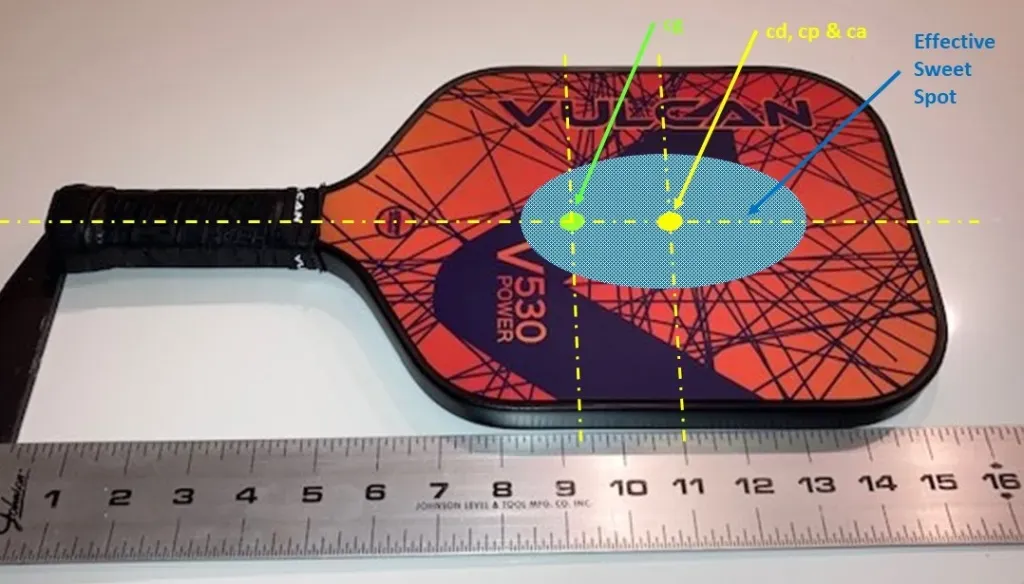
What is the Sweet Spot?
The sweet spot is essentially the prime real estate on your paddle face, the area that produces the best response when the ball is struck. Imagine hitting the bullseye in a game of darts; that's what it feels like when you strike a pickleball with the sweet spot. The results? Maximized power, minimal vibration, and optimal control.
- Location: Generally found near the center of the paddle, but size and exact placement can vary.
- Shape impact: Standard paddles have a wider design, contributing to larger sweet spots. In contrast, elongated paddles, designed for added reach, typically feature a smaller sweet spot centered above the traditional midpoint.
- Materials influence: The construction of the paddle face whether it's made of graphite, fiberglass, or carbon fiber affects the feel and performance of the sweet spot.
By offering a more forgiving hitting area, paddles with a larger sweet spot help players reduce errors, making it easier to place the ball accurately and consistently. The sweet spot provides that comfortable hitting sensation, generating confidence and reducing the likelihood of mishits.
Why is the Sweet Spot Important?
The significance of the sweet spot cannot be understated, especially for those at the cusp of mastering pickleball. This zone aside from offering the best response and comfort plays a critical role in improving a player's overall game.
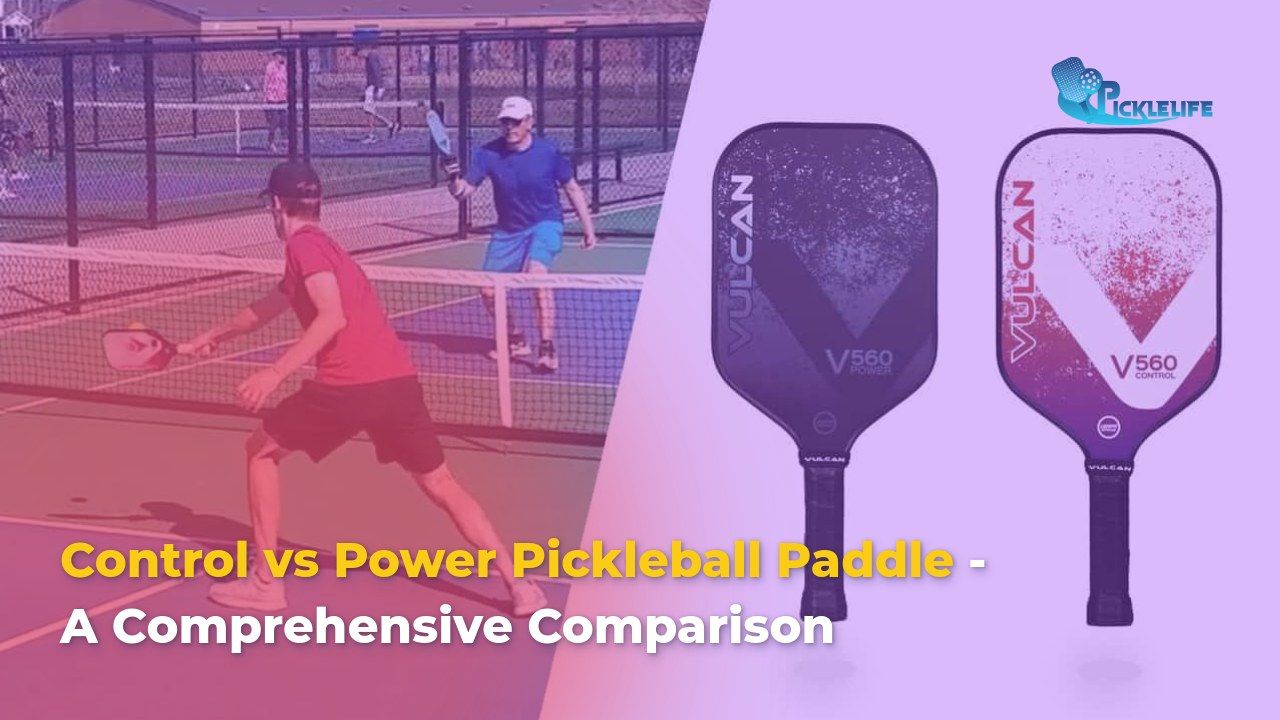
- Accuracy: A larger sweet spot reduces room for error, ensuring cleaner, more accurate shots.
- Comfort: Minimized vibrations mean less strain on your wrists and arms, contributing to a comfortable playing experience.
- Energy efficiency: Striking the ball in this area maximizes energy transfer, so you exert less effort for more power.
- Confidence: A forgiving sweet spot builds confidence, allowing players to focus on strategy rather than worrying about mishits.
For beginners, having a paddle that offers such advantages can make the learning process smoother and more engaging, while experienced players will appreciate the consistent performance enhancement.
How the Sweet Spot Impacts Your Pickleball Game
Integrating the sweet spot into your gameplay revolutionizes your approach to pickleball. It’s the centerpiece of shot execution, influencing how comfortably and efficiently you maneuver through rallies. Understanding its impact underscores the importance of paddle selection based on this feature.

Improved Control and Accuracy:
The sweet spot's position and size directly influence your control and accuracy. Just as every professional golfer seeks that perfect swing with minimal effort, pickleball players aim to strike the ball within this optimal zone. A well-defined sweet spot allows the paddle to absorb the ball's impact and return it with precision. Consequently, players experience fewer moments where slight mishits turn into dangerous errors, leading to out-of-bound shots or unwanted net interactions.
- Enhanced shot placement: With the sweet spot, your paddle reacts predictably to every shot, enabling sharp, strategic ball placements.
- Reduced corrective techniques: Players can maintain consistent form without needing to over-correct or adjust their grip mid-rally.
Enhanced Power with Less Effort:
Harnessing power with minimal effort sounds like a balancing act reserved for seasoned athletes, but the sweet spot makes this achievable for everyone. This area is designed to maximize power dispersion across the paddle surface, meaning that even with a softer touch, the resulting ball speed is impressive.
- Energy conservation: The enhanced power output allows you to sustain longer rallies without expending excessive energy.
- Efficient practice: As your understanding of the sweet spot grows, your practice sessions become more productive, allowing you to allocate focus on other essential skills.
Your paddle choice, particularly the sweet spot's size, can fundamentally change your game dynamics, enabling efficient energy conservation without sacrificing shot power.
Minimized Mishits and Frustration:
Mishits are a common grievance among players; they disrupt gameplay flow and impact your play's enjoyment. A large, forgiving sweet spot addresses this issue by significantly reducing the frequency of these mishits.
- Confidence boost: Consistent, quality hits affirm your skills and boost your self-assurance on the court.
- Control of play: With reduced mishits, you maintain greater control over the direction and spin of the ball, creating more strategic opportunities.
Eliminating the frustration associated with frequent mishits results in an engaging, enjoyable pickleball experience where every play feels rewarding.
Increased Confidence for Beginners:
For newcomers, the journey into pickleball is punctuated by learning curves and a series of aha moments. The generous margin of error offered by the sweet spot is a nurturing feature in a beginner's development.
- Forgiveness for mistakes: Beginners can take risks and try new techniques without the fear of frequent failures.
- Accelerated learning: A wider sweet spot encourages frequent practice by rewarding effort with tangible success and improvement.
This forgiving space champions development, allowing beginners to focus on their growth trajectory as they refine those all-important basic shots and footwork.
See more: Top Pickleball Paddles: Reviews for 2025
Key Factors Influencing Sweet Spot Size
Understanding how the sweet spot influences gameplay is only part of the puzzle. The size and efficacy of your sweet spot are contingent upon several key factors within paddle design, guiding your choice of equipment and ultimately ensuring it aligns with your playing style.
Paddle Shape and Dimensions
Paddle shapes and their corresponding dimensions are the cornerstones of sweet spot design. The choices between standard and elongated paddles influence both reach and the sweet spot location.
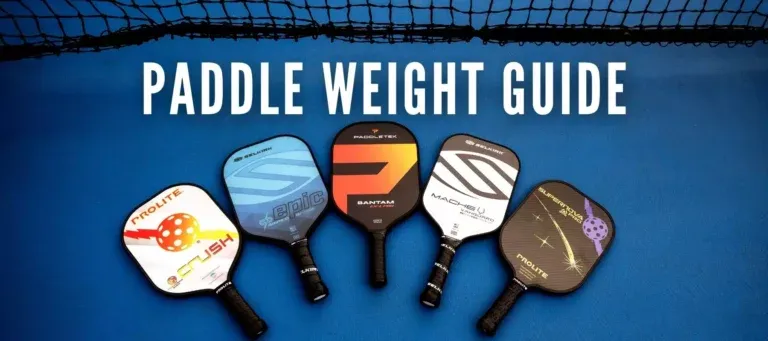
- Standard paddles: These offer a broader surface area, inherently creating a larger sweet spot. They’re ideal for players prioritizing consistent ball control without sacrificing comfort.
- Elongated paddles: While providing additional reach advantage, these typically possess a smaller sweet spot. Their preference is amongst players with more advanced technical capabilities who enjoy executing overhead returns.
Moreover, regulations by organizations like the USAPA ensure paddles don't exceed specific dimensions, maintaining standardization across play equipment, highlighting the sweet spot's strategic role.
Paddle Core Materials
The core material of the paddle intricately affects sweet spot resilience and performance:
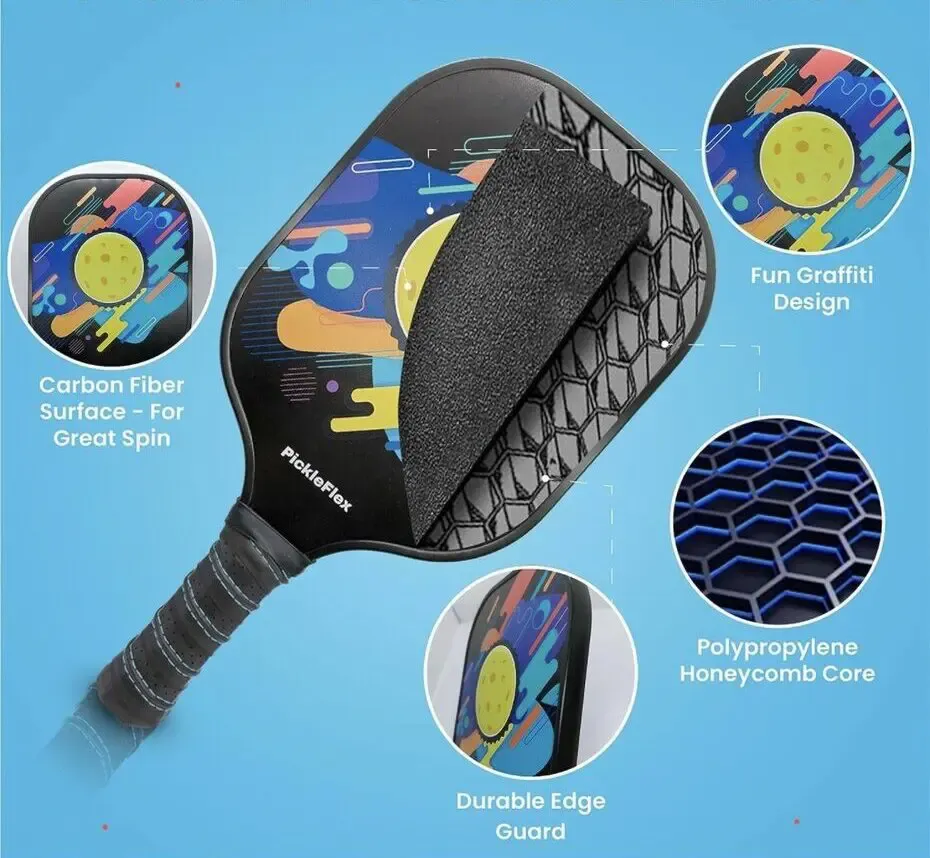
- Polymer honeycomb: Predominantly used for its soft touch and comfort. Its superior energy absorption results in a friendlier sweet spot.
- Nomex and aluminum: Offer different playing experiences, but they're generally less forgiving than polymer, influencing the player's touch sensitivity and overall game feel.
Higher-quality materials sustain a well-balanced sweet spot, impacting energy transfer and tactile feedback, resulting in a genuinely integrated paddling session.
Paddle Face Materials
Paddle face materials further dictate the interaction between the sweet spot and ball:
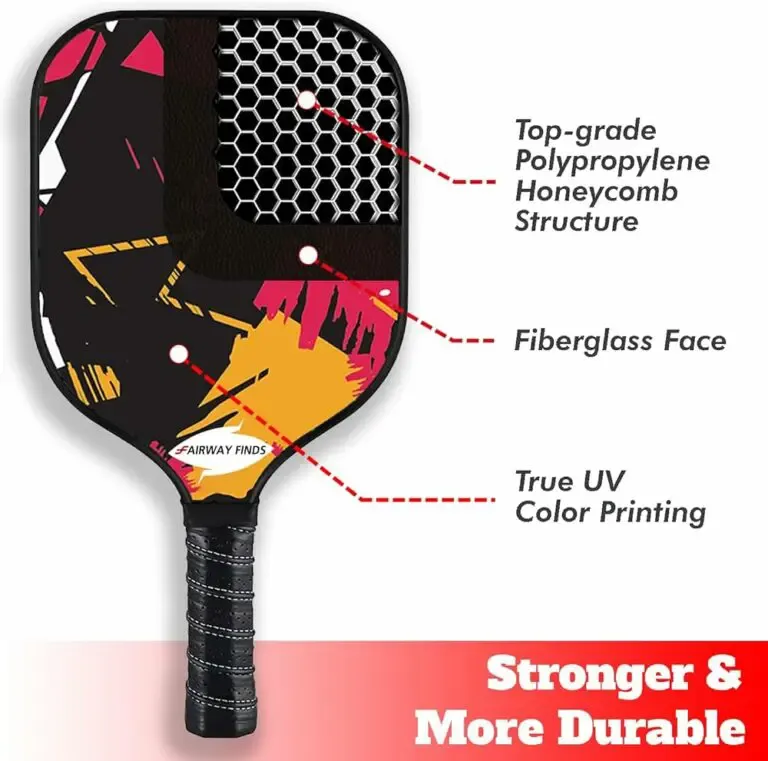
- Graphite: Valued for its lightness and strength, enhancing player control while supporting a consistently large sweet spot.
- Fiberglass: Typically employed to provide additional control and a responsive feel.
- Carbon fiber: Favored by advanced paddlers for its stiffness and precision, allowing them to exploit a well-defined sweet spot for complex shots.
Your paddle's face influences your gameplay dynamics, creating an opportunity to match paddle characteristics with your strategic inclinations.
Finding and Improving Contact with Your Paddle's Sweet Spot
Navigating toward your paddle's sweet spot is akin to an artisan honing their craft. It demands understanding, adaptability, and persistent practice a metaphorical cornerstone framing one's continual growth in pickleball proficiency.
- Diagnostic assessment: Firstly, introspect your paddle specifications the contours, core properties, and face materials and how they interact on contact.
- Skills drills: Regular exercises (e.g., soft serves and rally practices) refine muscle memory, incrementally ingraining focused sweet spot contact.
- Approach adjustments: Re-calibration of strokes or grips may yield marked improvements, incrementing sweet spot utilization efficiency.
By embedding sustained efforts and versatile mindset shifts, tapping into the sweet spot becomes intuitive, ultimately enriching your pickleball journey.
USAPA Regulations and the Sweet Spot
Ensuring fair competition in pickleball involves adherence to the United States of America Pickleball Association (USAPA) regulations, which cover everything from equipment specifications to maximizing the sweet spot effect.
- Dimensional regulation: The cumulative dimensions of paddle length and width are capped at 24 inches, while lengths must not exceed 17 inches, maintaining uniformity across competition platforms.
- Material standards: USAPA guideline-conforming paddles use specific materials and reflect structural durability, guaranteeing a calculated sweet spot standardized for all players.
Respecting these regulations safeguards the game's equitable spirit while promoting confident competition explorations intertwined with diverse strategic applications.
Beyond "Largest": Focusing on "Sweet Spot Consistency"
While pursuing a paddle offering the largest sweet spot is undeniably valuable, elite performances pivot towards "sweet spot consistency," an often overlooked concept underlying steadfast game advancement.
- Technology integration: The emergence of QuadFlex layering or HydroCarbon fiber enhancements epitomizes technology bridging the gap between consistency and expansive sweet spots, bolstering uniformity.
- Reinforced engineering: Consistency originates from materials and cores meticulously interwoven, reducing anomalies linked to variable contacts or resonances that disrupt gameplay synergy.
An embrace of sweet spot consistency attests to the strategic triumph of paddles intricately designed not merely around size but unfaltering multifaceted performance.
Choosing the Right Paddle for Beginners: The Sweet Spot Advantage
The sweet spot's role in guiding beginners through the initial phases of pickleball growth is monumental. By selecting a paddle tailored to their level, beginners foster an environment conducive to focused learning and adaptation.
- Forgiveness-factor: Paddles with generous sweet spots like widebody models absorb impact more efficiently, encouraging fledgling players to delve into technique refinement without accommodating undue pressure.
- Foundational development: Immersed in a supportive setting, learners cultivate a sensitivity for placement and strategic wit, cementing skills imperative to advanced plays.
The beginner’s embarkation into pickleball transcends immediate victories; it consists of harmonizing immersion with methodical habit formation a paddle with a forgiving sweet spot forming an invaluable companion on this journey.
Frequently Asked Questions
As you deliberate selecting the right beginner's paddle, insights on common questions deepen your understanding and facilitate informed decision-making. By expanding on these frequently pondered topics, one can fully immerse in the nuanced interplay between sweet spot dynamics and overall play progression.
How Does a Larger Sweet Spot Impact My Performance?
A larger sweet spot augments your pickleball experience, acting as a catalyst for a universally improved performance spectrum.
- High-margin execution: More generous hit zones enable players to venture beyond accuracy into expressive shot creativity fueled by uninhibited confidence.
- Reduced error frequency: Consistent connection with the expanded sweet spot ensures stable delivery, minimizing the frustration linked to errant ball contact and frequent correctives.
Transforming the sweet spot from a feature into an intrinsic strength facilitates the advance of every player's strategic nuances.
What Other Factors Should I Consider When Selecting a Paddle?
Your personal criteria when determining paddle suitability extend beyond just the sweet spot.
- Weight preferences: Lighter paddles emphasize flexibility and directed control, while heavier counterparts inject power but may influence motion restrictions and endurance necessities.
- Grip comfort balance: Evaluating circumference alongside textural comfort supports long playing sessions, minimizing fatigue accumulation or resultant strain-related injuries.
Understanding this multifaceted valuation promotes a rewarding leap from hesitant selection approaches toward adept, confident bravado.
Can I Improve My Sweet Spot Accuracy with Practice?
Absolutely, refining sweet spot accuracy demands intentional strategy and persistence.
- Technique exploration: Consistent repetition, shot sampling, and structured drills foster comfort, aligning intuition with cultivated practice methodologies.
- Progressive tracking: Leveraging video analyses or collaborative workshops reveals patterns, illuminating pathways leading to sweet spot perfection across diurnal evolution stages.
This pursuit transcends simple skill acquisition it's a disciplined pilgrimage toward lifelong pickleball mastery.
Are Paddles with Larger Sweet Spots Suitable for Beginners?
Indeed, paddles incorporating expansive sweet spots are invaluable beginner resources, complementing intrinsic learning goals alongside goal achievement for novice players.
- Confidence-building measures: Engaging with wider sweet spots supports misalignments within action potential, softening potential fallibility and negating deter motivations.
- Carefree exploration opportunity: With greater resilience, beginners can navigate pressure-free practices, refining nascent techniques within forgiving contexts.
Integrity emerges through enduring resilience, conceding glimmers of hope as aspiration meets fortitude.
Is Paddle Size Regulation Important?
Maintaining adherence to paddle size regulation is imperative, ensuring fair and standardized play beyond immediate fulfillment.
- Dimension standardization: By capping dimensions at 17 inches in length, collective uniformity arises, creating equilibrated competitive fields and preserving game integrity.
- Resultant arbitration: Regulatory influence balances beginners and expert systems uniformly by systematically navigating calculated evolutions.
Showcasing synergy between participation equality and standardized equipment formats speaks to holistic psychometric endeavors benefiting all pickleball enthusiasts.
Can a Larger Sweet Spot Compensate for Other Skill Deficiencies?
While expansive sweet spots compensate partially, organic skill enhancement remains lifesaving:
- Short-term proficiency effects: A more prominent hit zone stabilizes early technique discrepancies, facilitating transitional improvements upon additional technical aptitude refinement.
- Holistic developmental dialogue: True success emanates from harmonizing sweet spot advantages with thorough progression within mastery methodologies embraced iteratively.
























